HIS HOBBY: CRESTED CACTI FORMS
Translation Larisa Zaitseva (Chelyabinsk), Anna Dourtseva (Samara)
Let us introduce to you Winfried Starke (photo 1), a well-known connoisseur of the crested forms of succulent plants. His site http://www.wstarke.de/index.html is one of the most exhaustive and informative.
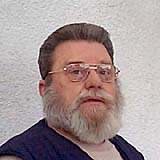 |
| Fig. 1. Winfried Starke |
Winfried Starke was born in 1939 in Dresden (Germany). He has got his education in the same city, in 1971 he became a certified engineer in informatics and electronics.
Cacti has been his hobby since 1950. At first his collection of normal forms took 2 square meters on windowsill, in ten years the area of the windowsill doubled. In 1970 there appeared a greenhouse with an overall area of 20 square meters where Winfried Starke cultivated normal and cristate forms. Since 1980 there were only cristate forms in the greenhouse. In 1990 the area of the greenhouse doubled and in 1995 it doubled once again and now the greenhouse by Winfried Starke takes 80 square meters. All the area is taken by the cristate forms! There are about 600 species in Winfried Starke's collection (photo 2-3).
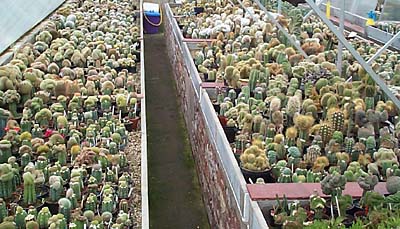 |
| Fig. 2. |
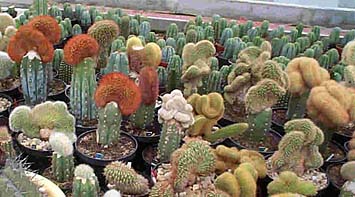 |
| Fig. 3. |
Question: Do you cultivate crested forms on their own roots?
Answer: The crested forms are not grown on their own roots, because the stem of the plant when touching the earth begins to rot.
Question: What age do the crested forms begin to bring flowers at?
Answer: The ability of crested forms to bring flowers depends on species and age of a plant – the same as in normal forms. But I should say that the crested forms bring less flowers than normal forms – by one-fourth approximately.
Question: Which cacti do you prefer to use as stocks for you crests?
Answer: I prefer to graft onto Trichocereus macrogonus, pachanoi which are all-purpose stocks. Trichocereus spachianus is good for the "wide" species such as Lobivia, Cereus jusbertii is good for the "narrow" species, for example Epithelantha.
Question: There is a long list of articles on cristate forms of succulents in your site. Would you recommend the most interesting articles to publish in the e-magazine "Cultivar"?
Answer: Biologie der Kammformen bei Kakteen (Biology of the crested forms in the Cactaceae family), author: Dr. Georgii Volsky (Russia).
Question: Could you acquaint the readers of our magazine with the new photos of crested forms?
Answer: It's a pity but for the moment I have no fresh photos. I expect my son to visit me in summer and make some new snapshots.
From the Editor: We sincerely hope to meet Winfried Starke and his plants in the pages of our magazine once more.
Photos for this article from the site http://www.wstarke.de/index.html:
(Attention: some photos are very large)
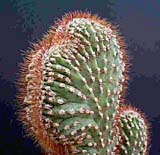
Cereus peruvianus, crested form
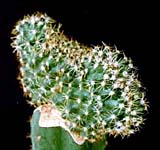
Coryphantha erecta, crested form
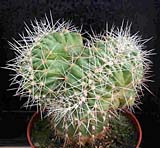
Echinocereus brandegeei, crested form
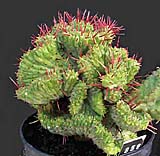
Euphorbia polygona, crested form
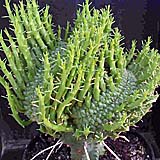
Euphorbia puginiformis, crested form
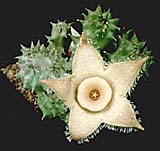
Diplocantha ciliata, crested form
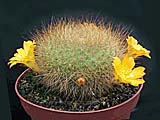
Rebutia marsoneri, normal form
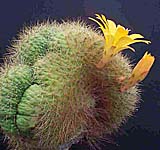
Rebutia marsoneri, crested form
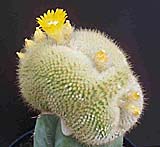
Notocactus mueller-melchersii, crested form
| | | | | | | | |





